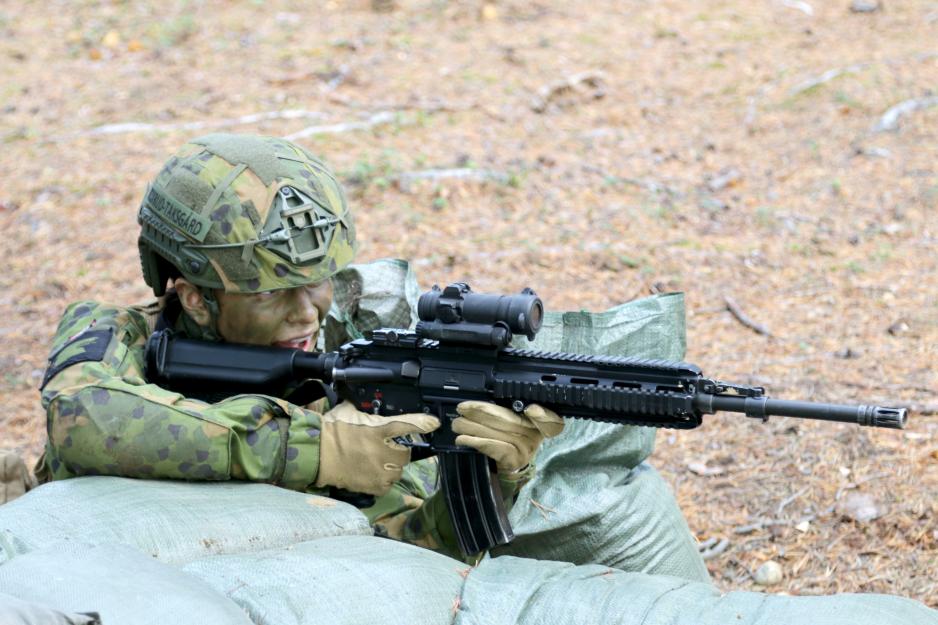Arne O. Holm says A Perfect Storm: When Healthcare and Defense Competes for the Same Youths

Training is taking place in both Finland and Norway. Here from Finnmark Home Guard District (HV-17), Porsangmoen Camp in Finnmark. (Photo: Arne O. Holm)
Comment (Porsangmoen og Sodankyle): A perfect storm is brewing in the North. Soon, two of our most important public agencies will fight for the same workforce. Without drastic measures, one of them, perhaps both, will be left as losers.
This is a comment written by a member of the editorial staff. All views expressed are the author's own.
For a few days, I have been moving off the beaten path north in Norway and Finland. Two countries that share many characteristics, not least the neighborship with Russia. In total, a 1,538-kilometer-long border to an increasingly aggressive neighbor. This is not new.
A new feat, however, is that the two countries are part of the same defense alliance, NATO.
Seven of eight Arctic states
And to put this into a greater context: Seven of eight Arctic states are currently members of NATO. Only two of these hold nuclear weapons: Russia and the USA. Most of the Russian nuclear weapons are located in the North, not far from the border to Norway and Finland.
On the Norwegian side, the Finnmark Brigade is slowly but surely being built up. Chief of Staff Kjetil Røstad does not want to give an exact answer to how many the brigade is able to mobilize from the Porsangmoen Camp. However, in 2036, when fully developed, the brigade will have a force of about 3,000 and 5,500 soldiers, officers, and others.
A perfect storm in the North.
On the Finnish side, Colonel Marko Kivelä is responsible for the Finnish Jaeger Battalion in Sodankyla, an army force that is ready at all times, 24/7, in case of war.
The municipalities of Porsanger in Finnmark and Sodankyla in Lappland have more in common than a border with Russia and a military camp. They are typical outskirts of a thinly-populated area of the Arctic. Finnish Lapland comprises almost a third of Finland's land area, but only three percent of the Finnish population lives here.
The same can be seen in Norway's three northernmost counties, Nordland, Troms, and Finnmark. They comprise almost a third of Norway's area, but only nine percent of the population.
These are the naked facts as the respective governments and NATO are planning a momentous rearmament in the North to prepare for an unpredictable Russia.
And allocations for the defense sector are not lacking.
Only three percent of the population.
Fewer and fewer
The soldiers I meet in the Finnish and Norwegian woods, whether they belong to the Home Guard or the Armed Forces, crawl up and down trenches, or practice advances or withdrawals in rugged terrain with great enthusiasm. On the Norwegian side, many of the soldiers are women; on the Finnish side, they only make up a few percent.
The problem is that they are getting fewer and fewer.
The Armed Forces allocations provide gunpowder and bullets, but not more young people in the North.
In 2036, the aging population will make up an even larger part of the population, while the birth rates keep plummeting.
This worries officers on both the Norwegian and the Finnish side. Finnish Marko Kivelä goes so far as to call the situation alarming. He has, in addition to decreasing birth rates, also considered what he refers to as an increasingly serious health situation among young people. Norwegian Kjetil Røstad calls the situation critical.
Defense or health
If we include that the Armed Forces are dependent on a civil health care system that works, the situation becomes even more serious. Because just as the Armed Forces, the health care services are struggling with recruitment, particularly in the North. And I am talking about health personnel here, not what some may call overpaid directors.
Demography is math, not guesswork.
In other words, the Armed Forces and the healthcare system, which are mutually dependent on each other, are competing for the same scarce resource: young people entering the workforce. The demand, in a war economy, is significantly increasing while the supply is decreasing drastically.
The benefit, if one could even use such a term, is that we already know what struggles we are soon facing. Demography is math, not guesswork.
That means that something can be done about this. Something drastic.
But every solution starts with acknowledging the problem, not sticking our heads in the sand and hoping the problem will pass.
That acknowledgement is weakening significantly the further one moves away from the border with Russia.
Or in other words, the closer you get to the Oslo Stock Exchange or Nasdaq Helsinki.
This comment was written on a journalist trip organized by Barents Press.



